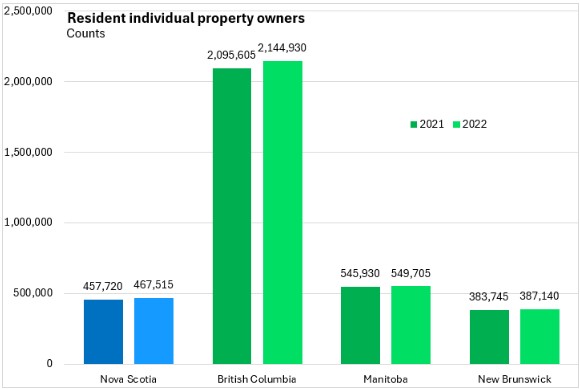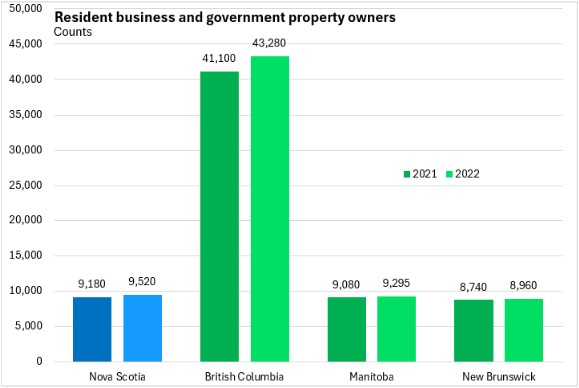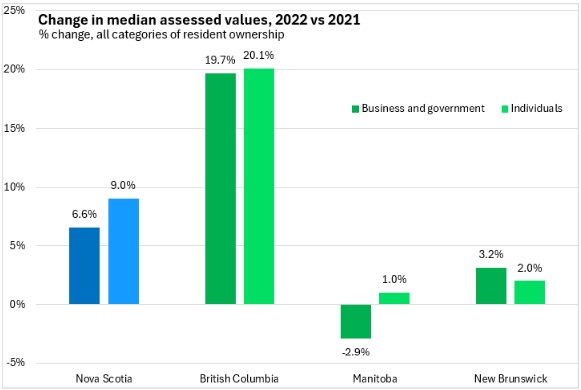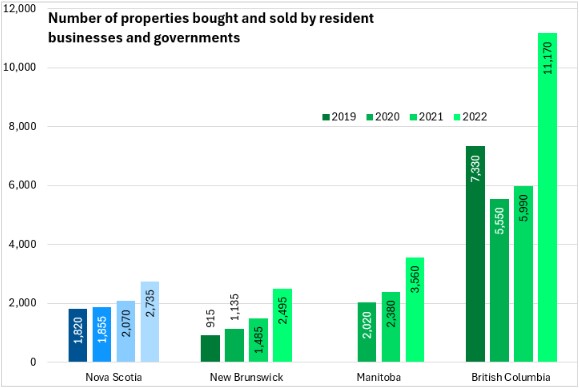The Economics and Statistics Division maintains archives of previous publications for accountability purposes, but makes no updates to keep these documents current with the latest data revisions from Statistics Canada. As a result, information in older documents may not be accurate. Please exercise caution when referring to older documents. For the latest information and historical data, please contact the individual listed to the right.
<--- Return to Archive
For additional information relating to this article, please contact:
August 21, 2024CANADIAN HOUSING STATISTICS PROGRAM, 2022 Statistics Canada released new data today from the Canadian Housing Statistics Program (CHSP) for the 2022 reference year. Today's release includes updated information on the characteristics of residential properties including property type, period of construction, living area and assessment value and statistics on residency ownership. The data for 2022 have been expanded to census subdivisions. Data presented below at the provincial level is only for provinces with data for 2022.
The Canadian Housing Statistics Program (CHSP) provides information on the residential property stock, defined as all residential properties in a given geographic region, excluding vacant land. Residential properties include all land and structures intended for private dwelling purposes. A residential property may consist of one dwelling, as is common for single-detached housing, or multiple dwellings such as apartment buildings or row housing.
An individual is considered a resident if their primary dwelling is in the economic territory of Canada, and are considered a non-resident if their primary dwelling is outside the economic territory of Canada. A property is classified as resident owned when the majority of owners are defined as residents. Conversely a property is classified as non-resident owned when the majority of owners are defined as non-residents. When there is an equal number of resident and non-resident owners for the same property, the property is classified as resident owned.
In 2022 the number of resident individual and business and government property owners increased in all provinces reporting data. Nova Scotia property owner counts grew 2.1% in individual property owners and 3.6% in business and government owned properties. British Columbia reported the strongest gain in both individual(2.3%) and business and government(5.0%) property owner counts.


Median assessment values were up for resident individuals across all provinces reporting data, with Nova Scotia reporting the second strongest growth at 9.1%. Resident business and government median assessment values were up in 3 of 4 provinces reporting, led by British Columbia at 20.1%, with Manitoba reporting the only decline at 2.9%.

The number or properties bought and sold by resident individuals, as well as resident businesses and governments were up across all provinces reporting data in 2022. Nova Scotia's gains in individual property counts were at 30.0% and at 32.1% for business and government. British Columbia led in both categories, with gains of 42.5% in individual property counts, and 86.5% for businesses and governments.


The median assessment value of properties bought and sold by residents was up in 2022 across all provinces and categories. Nova Scotia led in assessment value increases, with a 20.2% gain in individual sale values, and a 29.3% gain for those properties bought and sold by resident businesses and governments. The smallest growth was in Manitoba.

Source: Statistics Canada, Canadian Housing Statistics Program, 2022
<--- Return to Archive